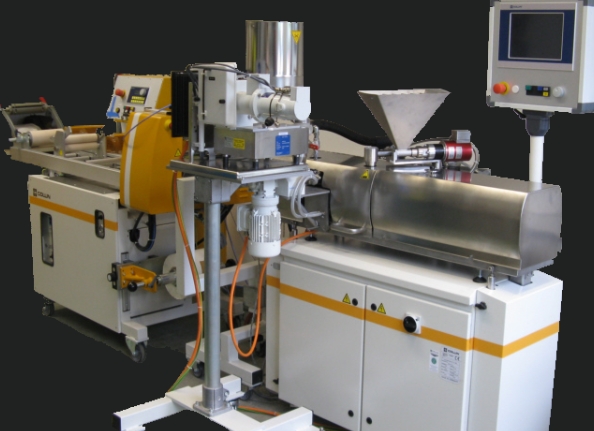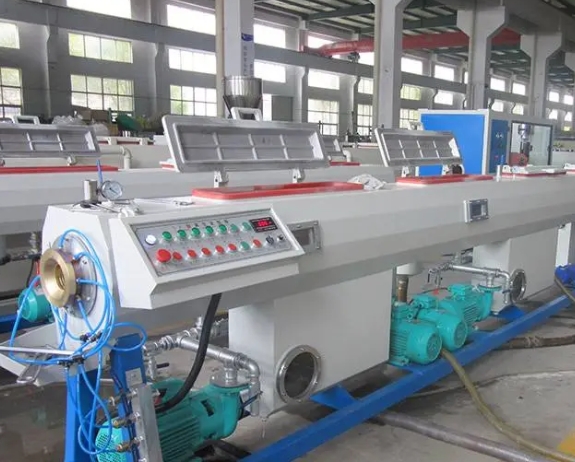Content Menu
● Introduction to Extrusion Test Equipment
● Types of Extrusion Testing Methods
>> Forward Extrusion
>> Back (Backward) Extrusion
>> Impact Extrusion
>> Hydrostatic Extrusion
>> Melt Flow Index (MFI) Testing
● Key Properties Measured by Extrusion Testing
● Step-by-Step Guide to Performing Extrusion Tests
>> 1. Preparation
>> 2. Equipment Setup
>> 3. Loading the Sample
>> 4. Running the Test
>> 5. Data Collection and Analysis
>> 6. Post-Test Procedures
● Essential Components of Extrusion Test Equipment
● Quality Control and Troubleshooting in Extrusion Testing
>> Quality Control Procedures
>> Common Troubleshooting Steps
● Applications Across Industries
● Conclusion
● Frequently Asked Questions (FAQ)
>> 1. What is the difference between forward and back extrusion testing?
>> 2. How is melt flow index (MFI) measured using extrusion test equipment?
>> 3. What are the key factors affecting the accuracy of extrusion tests?
>> 4. How can extrusion test equipment be used for quality control in manufacturing?
>> 5. What common problems occur during extrusion testing, and how can they be resolved?
● Citations:
Extrusion test equipment is fundamental in a wide range of industries, from food and pharmaceuticals to plastics and metals, for evaluating the properties and quality of materials that are processed through extrusion. This comprehensive guide details the principles, procedures, and best practices for performing tests using extrusion test equipment, ensuring reliable, repeatable, and meaningful results.

Introduction to Extrusion Test Equipment
Extrusion test equipment is designed to simulate, measure, and analyze the behavior of materials as they are forced through a die or orifice under controlled conditions. The purpose is to assess properties such as flow, consistency, firmness, and spreadability, which are critical for both process optimization and final product quality[1][2][7].
Extrusion tests are commonly used for:
- Polymers and plastics (e.g., melt flow rate testing)
- Food products (e.g., gels, pastes, spreads)
- Pharmaceuticals (e.g., ointments, tablets)
- Metals (e.g., wire, tubing, profiles)
These tests help manufacturers ensure that materials meet specific performance criteria, comply with industry standards, and are suitable for end-use applications.
Types of Extrusion Testing Methods
Extrusion testing can be broadly categorized based on the direction of material flow and the specific application. The main methods include:
Forward Extrusion
- The sample is placed in a container and forced through a die or grid at the base.
- Commonly used for viscous liquids, gels, and homogeneous pastes.
- The resistance to flow through the orifice is measured[1][2].
Back (Backward) Extrusion
- The sample is contained in a cylinder, and a piston or disc is pushed down, forcing material to flow back up around the piston.
- Favored for testing products in their original containers to prevent structural disruption.
- Suitable for measuring the consistency and spreadability of semi-solids and gels[1][2].
Impact Extrusion
- A high-speed punch strikes the material, causing it to flow into a die cavity.
- Used primarily for forming hollow metal components like tubes and cans[4].
Hydrostatic Extrusion
- The material is surrounded by a fluid, and pressure is transmitted hydraulically.
- Reduces friction and is used for materials that are sensitive to high shear forces[4].
Melt Flow Index (MFI) Testing
- Specifically for thermoplastics, where molten polymer is extruded through a standardized die under specific temperature and load conditions.
- Measures melt mass flow rate (MFR) and melt volume flow rate (MVR)[7].
Key Properties Measured by Extrusion Testing
Extrusion test equipment allows for the quantification of several critical material properties:
- Firmness: Resistance to deformation under applied force.
- Spreadability: Ease with which a material can be spread or dispensed.
- Consistency: Uniformity of texture and flow characteristics.
- Extrudability: Force required to extrude the material through a die.
- Syringeability: Ease of dispensing from a syringe or tube.
- Work of Extrusion: Total energy required to extrude the sample.
- Cohesion: Internal bonding strength within the material[1][2][7].
For plastics, additional properties such as melt flow rate, viscosity, and thermal stability are measured to assess processability and product performance[7][14].

Step-by-Step Guide to Performing Extrusion Tests
1. Preparation
- Sample Selection: Ensure the sample is representative and homogeneous.
- Conditioning: Precondition the sample as per relevant standards (e.g., temperature, humidity).
- Equipment Calibration: Calibrate extrusion test equipment according to the manufacturer's instructions and relevant test standards[7][14].
2. Equipment Setup
- Choose the Appropriate Fixture: Select forward or back extrusion fixtures, or specialized dies for MFI testing, based on the material and property of interest[1][2][7].
- Install the Die or Orifice: Ensure the die is clean, properly sized, and securely mounted.
- Set Temperature and Load: For thermoplastics, heat the barrel to the specified temperature and apply the correct piston load[7].
3. Loading the Sample
- Insert the Sample: Place the sample into the extrusion chamber or cylinder, avoiding air pockets.
- Seal the System: Ensure the system is closed as required, with no leaks or gaps.
4. Running the Test
- Initiate the Test: Start the extrusion process at a controlled speed or force.
- Monitor Parameters: Record force, displacement, temperature, and extrusion rate in real time using the equipment's data acquisition system[7][14].
- Observe Material Behavior: Note any irregularities such as surging, clogging, or inconsistent flow.
5. Data Collection and Analysis
- Measure Key Outputs: Depending on the test, measure maximum force, total work, extrudate mass, or volume per unit time.
- Repeat Trials: Conduct multiple runs to assess repeatability and consistency.
- Calculate Results: For MFI, calculate melt flow rate (MFR) or melt volume flow rate (MVR) as per standards[7].
6. Post-Test Procedures
- Clean Equipment: Remove residual material and clean dies, barrels, and fixtures to prevent contamination.
- Document Results: Record all test parameters, observations, and calculated values for quality control and traceability[14].
Essential Components of Extrusion Test Equipment
Understanding the main components of extrusion test equipment is crucial for effective operation and maintenance:
| Component | Function |
| Barrel | Contains the sample and is often heated for thermoplastics. |
| Die/Orifice | Shapes the extrudate and provides resistance for measurement. |
| Piston/Plunger | Applies force to the sample to initiate extrusion. |
| Load Cell | Measures the force required for extrusion. |
| Temperature Control | Maintains precise thermal conditions during testing. |
| Data Acquisition | Records force, displacement, and temperature for analysis. |
| Accessories | Include fixtures for forward/back extrusion, screens, and breaker plates for filtering. |
Modern extrusion test equipment may also feature:
- Automated sample loading
- Real-time graphical data display
- Software for advanced statistical analysis and reporting[6][7][14]
Quality Control and Troubleshooting in Extrusion Testing
Quality Control Procedures
- Regular Calibration: Ensures accuracy and repeatability of measurements[3][14].
- In-Line Measurement: Real-time monitoring of extrudate dimensions and properties for immediate process adjustments[12].
- Final Product Inspection: Assessment of color, dimensional stability, structural integrity, and other relevant properties[14].
Common Troubleshooting Steps
- Inconsistent Flow: Check for die blockages, material contamination, or incorrect temperature settings[8][14].
- Surging or Pressure Fluctuations: Inspect feed system, screw design, and temperature uniformity[8].
- Bubbles or Off-Gassing: Reduce moisture content in raw materials and optimize melt temperature[8].
- Die Lines or Streaks: Clean or replace the die to remove buildup or damage[8].
- Mechanical Issues: Ensure all moving parts are lubricated and free from wear or damage.
A systematic approach to troubleshooting, starting from the base system and progressing through each stage of the process, is essential for identifying and resolving issues efficiently[5][8].
Applications Across Industries
Extrusion test equipment finds application in diverse sectors:
- Plastics: Determining melt flow properties for processability and quality control[7][14].
- Food: Measuring spreadability, consistency, and firmness of products like butter, margarine, and processed fruits[1][2].
- Pharmaceuticals: Assessing packaging integrity, tablet press-through strength, and ointment consistency[6].
- Metals: Evaluating ductility, toughness, and forming characteristics for wires, tubes, and profiles[4][9].
Each industry may have specific standards and best practices for extrusion testing, tailored to the unique requirements of their materials and products.
Conclusion
Extrusion test equipment is an indispensable tool for evaluating and ensuring the quality, consistency, and performance of materials processed through extrusion. By understanding the principles of extrusion testing, selecting the appropriate methods and equipment, and adhering to rigorous quality control procedures, manufacturers can optimize their processes and deliver products that meet the highest standards.
From plastics and food to pharmaceuticals and metals, the versatility and precision of extrusion test equipment make it essential for modern manufacturing and research. By following best practices in equipment setup, sample preparation, and data analysis, users can achieve reliable results that drive innovation and quality across industries.

Frequently Asked Questions (FAQ)
1. What is the difference between forward and back extrusion testing?
Forward extrusion involves forcing the sample through a die or orifice at the base of the container, measuring the resistance to flow. Back extrusion, on the other hand, uses a piston to push the sample so that it flows back around the piston and up the sides of the container. Back extrusion is often preferred for testing products in their original containers to avoid disrupting the sample structure[1][2].
2. How is melt flow index (MFI) measured using extrusion test equipment?
MFI is measured by heating a polymer sample in a barrel to a specified temperature, applying a standard load via a piston, and extruding the molten polymer through a die of known dimensions. The mass or volume of extrudate collected over a set period is used to calculate the melt mass flow rate (MFR) or melt volume flow rate (MVR), following standards such as ISO 1133 or ASTM D1238[7].
3. What are the key factors affecting the accuracy of extrusion tests?
Critical factors include:
- Proper calibration of extrusion test equipment
- Consistent sample preparation and conditioning
- Accurate temperature and load control
- Clean and well-maintained dies and barrels
- Adherence to relevant test standards and procedures[7][14]
4. How can extrusion test equipment be used for quality control in manufacturing?
Extrusion test equipment enables manufacturers to monitor and control key material properties during production. Real-time measurements help detect deviations, allowing for immediate adjustments to maintain product consistency, dimensional accuracy, and compliance with specifications[3][12][14].
5. What common problems occur during extrusion testing, and how can they be resolved?
Common issues include inconsistent flow, surging, bubbles, die lines, and mechanical failures. Solutions involve checking for material contamination, adjusting process parameters (temperature, speed, pressure), cleaning or replacing dies, and ensuring proper equipment maintenance[8][14].
Citations:
[1] https://www.stablemicrosystems.com/extrusion-testing.html
[2] https://www.azom.com/article.aspx?ArticleID=13299
[3] https://www.alexandriaindustries.com/content-library/extrusion-quality-procedures/
[4] https://testbook.com/objective-questions/mcq-on-extrusion--5eea6a0d39140f30f369e2ec
[5] http://www.foodextrusion.org/troubleshooting.html
[6] https://www.shimadzu-webapp.eu/magazine/issue-2011-1_en-ps/extrusion-testing-made-easy/
[7] https://www.zwickroell.com/products/extrusion-plastometer/
[8] https://www.lubrizol.com/-/media/Lubrizol/Health/Literature/LSP-Extrusion-Guide.pdf
[9] https://www.sanfoundry.com/mechanical-metallurgy-questions-answers-extrusion-equipments/
[10] https://wiki.bambulab.com/en/a1-mini/troubleshooting/how-to-check-which-part-is-clogged
[11] https://re3d.zendesk.com/hc/en-us/articles/4411545823764-Material-Testing-Procedure-for-Pellet-Extrusion
[12] https://www.conairgroup.com/resources/resource/extrusion-processing-basic-guide-to-auxiliary-equipment/
[13] https://www.minalex.com/2021/10/29/10-questions-ask-aluminum-extruder/
[14] https://plasticextrusiontech.net/quality-control-and-testing-procedures-in-plastic-extrusions/
[15] https://www.alpinepolytech.com/extrusion-testing/
[16] https://www.youtube.com/watch?v=h2P1oD-EtNw
[17] https://www.bosmal.eu/techniques-and-test-equipment-part-2/
[18] https://spectronic-camspec.co.uk/texture-analysis-methods/extrusion-test-methods/
[19] https://omnexus.specialchem.com/selection-guide/an-in-depth-look-at-extrusion
[20] http://www.buckleysinternational.com/casestudies/testing-of-extruded-sheet-materials
[21] https://www.bausano.com/en/test-analysis
[22] https://www.hmel.in/assets/pdf/technical_guide_to_pipe_extrusion_process_&_polysure_products-final_small.pdf
[23] https://thebonnotco.com/these-are-testing-times/
[24] https://blog.severpharmasolutions.com/analytical-tools-techniques-in-hot-melt-extrusion
[25] https://www.sciencedirect.com/topics/engineering/extrusion-process
[26] https://noztek.com/noztekfaqs/
[27] https://extruderpress.com/faqs/
[28] https://www.seagateplastics.com/frequently-asked-questions/
[29] https://pubs.aip.org/aip/acp/article-pdf/doi/10.1063/1.4965491/13728906/030021_1_online.pdf
[30] https://www.3devo.com/faq
[31] https://www.won-plus.com/blog/extrusion-technology-related-questions-and-answers_b40
[32] https://www.ulprospector.com/knowledge/9293/pc-predictive-maintenance-troubleshooting-plastics-extrusion-equipment/
[33] https://www.twi-global.com/technical-knowledge/faqs/plastic-extrusion
[34] https://careercenter.ies.org/interview-questions/extrusion-engineer
[35] https://www.plasticsengineering.org/2024/05/extrusion-troubleshooting-key-drivers-part-2-of-3-004714/
[36] https://www.dynisco.com/userfiles/files/Extrusion_Operations.pdf













